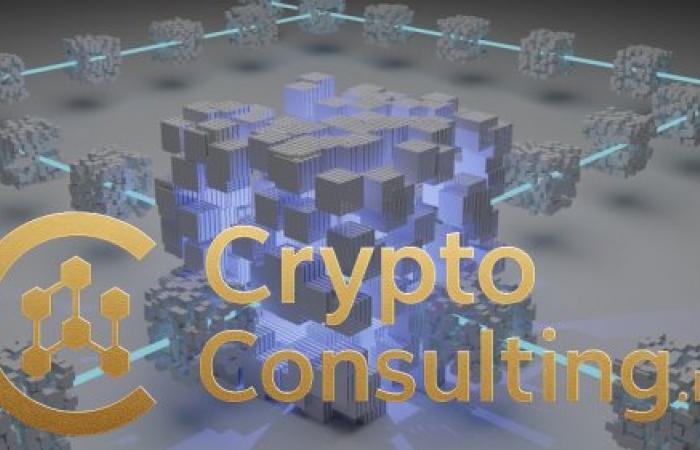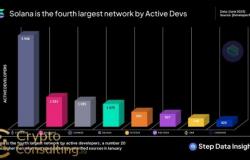
The Ethereum blockchain has achieved a major milestone in its evolution toward becoming the world's primary decentralized computing platform. In the fourth quarter of 2025, Layer 2 scaling solutions built on Ethereum have processed over $200 billion in transaction value, demonstrating that the network can handle mainstream adoption levels while maintaining its core security and decentralization properties. This achievement represents the culmination of years of research, development, and infrastructure deployment, positioning Ethereum as the foundation for the next generation of financial and technological applications.
The breakthrough comes as Ethereum's base layer has undergone significant protocol improvements, while Layer 2 networks have matured into production-ready systems capable of supporting millions of users. Together, these developments have solved the blockchain trilemma—achieving scalability, security, and decentralization simultaneously—a feat that skeptics once deemed impossible.
Layer 2 Ecosystem Reaches Critical Mass

The Layer 2 ecosystem on Ethereum has expanded dramatically in 2025, with multiple solutions now serving distinct use cases and user demographics. According to L2Beat, a blockchain analytics platform tracking Layer 2 activity, the combined total value locked across all Ethereum Layer 2 networks has reached $87 billion, representing a 425% increase from the beginning of 2024. This growth reflects both increased user adoption and rising asset values as confidence in Layer 2 security models has strengthened.
Optimistic rollups, including Arbitrum and Optimism, continue to lead in total value locked and transaction volume. Arbitrum processes an average of 4.2 million transactions daily, with peak days exceeding 7 million transactions. The network has achieved transaction fees averaging $0.02, making it economically viable for use cases that were previously impractical on Ethereum's base layer, including micropayments, gaming transactions, and frequent trading activities.
Optimism has similarly demonstrated impressive growth, with its OP Stack framework enabling numerous application-specific rollups to launch throughout 2025. Base, Coinbase's Layer 2 network built on the OP Stack, has become one of the fastest-growing blockchain platforms, onboarding over 15 million users and processing $45 billion in quarterly transaction volume. The standardization provided by OP Stack has created network effects that benefit the entire Optimism ecosystem through shared security upgrades and interoperability improvements.
Zero-knowledge rollups have also matured significantly. zkSync Era has processed over $28 billion in transaction volume during Q4 2025, with transaction finality times now averaging under 10 minutes. StarkNet, utilizing STARK proof technology, has achieved throughput of 180 transactions per second while maintaining verification costs below $0.01 per transaction. These zkRollup networks offer mathematical finality guarantees that many institutional users prefer over the fraud proof mechanisms employed by optimistic rollups.
Base Layer Protocol Improvements
Ethereum's base layer has undergone substantial improvements that complement Layer 2 scaling efforts. The Dencun upgrade, implemented in March 2024, introduced proto-danksharding through EIP-4844, creating a new transaction type called "blobs" that dramatically reduced data availability costs for Layer 2 networks. This single upgrade reduced Layer 2 transaction fees by an average of 85%, making these networks accessible to a broader user base and enabling new categories of applications.
Subsequent upgrades throughout 2025 have further optimized the base layer. The implementation of EIP-4788 improved communication between Ethereum's execution and consensus layers, enhancing the security of Layer 2 bridges and enabling more sophisticated cross-layer applications. Validator set size has grown to over 1.2 million active validators, providing exceptional decentralization and security for the network.
The transition to proof-of-stake, now in its third year, has proven remarkably successful. Network energy consumption has remained over 99% lower than the previous proof-of-work system, addressing environmental concerns that previously hampered institutional adoption. Staking participation has reached 34% of total ETH supply, with over 38 million ETH staked to secure the network. This high participation rate indicates strong alignment between token holders and network security.
Institutional Adoption and DeFi Growth
The improvements in scalability and cost-efficiency have catalyzed significant institutional interest in Ethereum-based applications. Major financial institutions have deployed infrastructure on Layer 2 networks to access decentralized finance protocols while maintaining compliance with regulatory requirements. JPMorgan's Onyx Digital Assets platform now settles over $2 billion in tokenized transactions daily using a permissioned Layer 2 solution that bridges to public Ethereum for final settlement.
The decentralized finance ecosystem has flourished within this improved infrastructure. Total value locked in DeFi protocols across all Ethereum layers has reached $185 billion, recovering from the lows experienced during the 2022-2023 market downturn. Lending protocols like Aave and Compound have deployed on multiple Layer 2 networks, providing users with the same security guarantees as mainnet deployments while offering transaction fees that are 95% lower.
Decentralized exchanges have particularly benefited from Layer 2 scaling. Uniswap processes over $6 billion in daily trading volume across its deployments on various Layer 2 networks, with the majority occurring on Arbitrum and Optimism where users can trade with minimal fees and near-instant confirmation times. The availability of efficient trading infrastructure has enabled market makers to provide tighter spreads, improving execution quality for all users.
Derivatives platforms have emerged as a significant DeFi category made viable by Layer 2 scaling. GMX, a decentralized perpetual futures exchange, has facilitated over $120 billion in trading volume during 2025, demonstrating that complex financial instruments can operate efficiently on blockchain infrastructure. The platform's success has inspired numerous competitors and imitators, creating a thriving ecosystem of decentralized derivatives trading.
NFT and Gaming Applications Scale Successfully
Non-fungible tokens and blockchain gaming applications have found their natural home on Layer 2 networks, where the economics of frequent, low-value transactions finally make sense. NFT marketplaces on Layer 2 networks have processed over 45 million NFT transactions in Q4 2025, with popular collections launching directly on Layer 2 to take advantage of lower minting costs and improved user experience.
Blockchain gaming has particularly benefited from Layer 2 infrastructure. Games like Parallel TCG and Dark Forest have onboarded hundreds of thousands of players who interact with blockchain assets multiple times per hour. The sub-cent transaction fees on Layer 2 networks make this level of blockchain interaction economically feasible, enabling game mechanics that would be prohibitively expensive on Ethereum's base layer.
The gaming category has also driven technical innovation in Layer 2 design. Application-specific rollups, which dedicate all their resources to a single application or game, have emerged as a popular architecture for gaming projects that require maximum throughput and customization. These app-chains maintain Ethereum security while offering game developers complete control over the execution environment.
Interoperability and Cross-Chain Communication
As the Layer 2 ecosystem has matured, interoperability between different Layer 2 networks has become increasingly important. Multiple solutions have emerged to address this need. Native bridging protocols, including Hop Protocol and Across Protocol, facilitate fast and secure asset transfers between Layer 2 networks without requiring users to return to Ethereum mainnet. These bridges have processed over $32 billion in cross-Layer 2 transfers during Q4 2025.
Shared sequencer networks are emerging as a potential solution to fragmentation challenges. By coordinating transaction ordering across multiple rollups, shared sequencers can provide atomic cross-rollup transactions, enabling complex applications to operate seamlessly across multiple Layer 2 networks. Several projects, including Astria and Espresso Systems, have launched shared sequencer mainnet implementations during 2025.
The development of abstraction layers is making the multi-rollup ecosystem more user-friendly. Account abstraction standards, particularly ERC-4337, have been widely adopted on Layer 2 networks, enabling smart contract wallets that can automatically route transactions to the most cost-effective network. Users increasingly interact with Ethereum applications without needing to understand which specific Layer 2 network is processing their transactions.
Regulatory Developments and Compliance
The regulatory landscape for Layer 2 networks has evolved considerably in 2025. The U.S. Securities and Exchange Commission has issued guidance clarifying that Layer 2 networks utilizing security mechanisms derived from Ethereum's base layer generally do not constitute separate securities offerings, provided they meet certain decentralization criteria. This regulatory clarity has enabled more projects to launch without extensive legal uncertainty.
Compliance infrastructure has matured to meet institutional requirements. Privacy-preserving identity solutions, including zero-knowledge proof-based verification systems, enable Layer 2 applications to implement Know Your Customer and Anti-Money Laundering procedures without compromising user privacy or decentralization. Several Layer 2 networks now offer compliance modules that institutions can optionally enable for their transactions while leaving the base protocol permissionless.
Tax reporting capabilities have also improved substantially. Blockchain analytics firms now provide comprehensive transaction tracking across all major Layer 2 networks, enabling users to generate accurate tax reports despite the complexity of multi-chain activity. This infrastructure addresses one of the practical barriers that previously prevented mainstream adoption.
Future Developments and Roadmap
The Ethereum community continues developing improvements that will further enhance Layer 2 capabilities. EIP-4844 was merely the first step in the roadmap toward full danksharding, which will exponentially increase data availability capacity. When fully implemented, danksharding is projected to enable the base layer to support hundreds of Layer 2 networks processing millions of transactions per second collectively.
ZK-EVM technology continues advancing, with multiple teams working toward fully equivalent zkRollups that can execute any smart contract without modification. These next-generation zkRollups will combine the security benefits of zero-knowledge proofs with complete compatibility with existing Ethereum applications, potentially becoming the dominant Layer 2 architecture.
Cross-layer messaging protocols are being standardized, with ERC proposals aimed at creating universal standards for communication between Layer 2 networks and the base layer. These standards will enable more sophisticated applications that leverage the strengths of multiple layers simultaneously.
Conclusion
Ethereum's achievement of processing over $200 billion in Layer 2 transaction value during Q4 2025 represents a defining moment in blockchain history. The combination of protocol improvements, mature Layer 2 infrastructure, and growing institutional adoption has created an ecosystem capable of supporting mainstream applications at global scale.
The modular approach to blockchain scaling, with a secure and decentralized base layer supporting numerous specialized Layer 2 networks, has proven more successful than alternative monolithic blockchain designs. This architecture preserves Ethereum's core values of decentralization and security while achieving the scalability necessary for mass adoption.
As infrastructure continues improving and user experience refinements eliminate remaining friction points, Ethereum and its Layer 2 ecosystem are positioned to serve as the foundation for the next generation of financial systems, decentralized applications, and digital ownership frameworks. The roadmap ahead promises further improvements in scalability, interoperability, and user experience, cementing Ethereum's role as the global settlement layer for the decentralized web.





